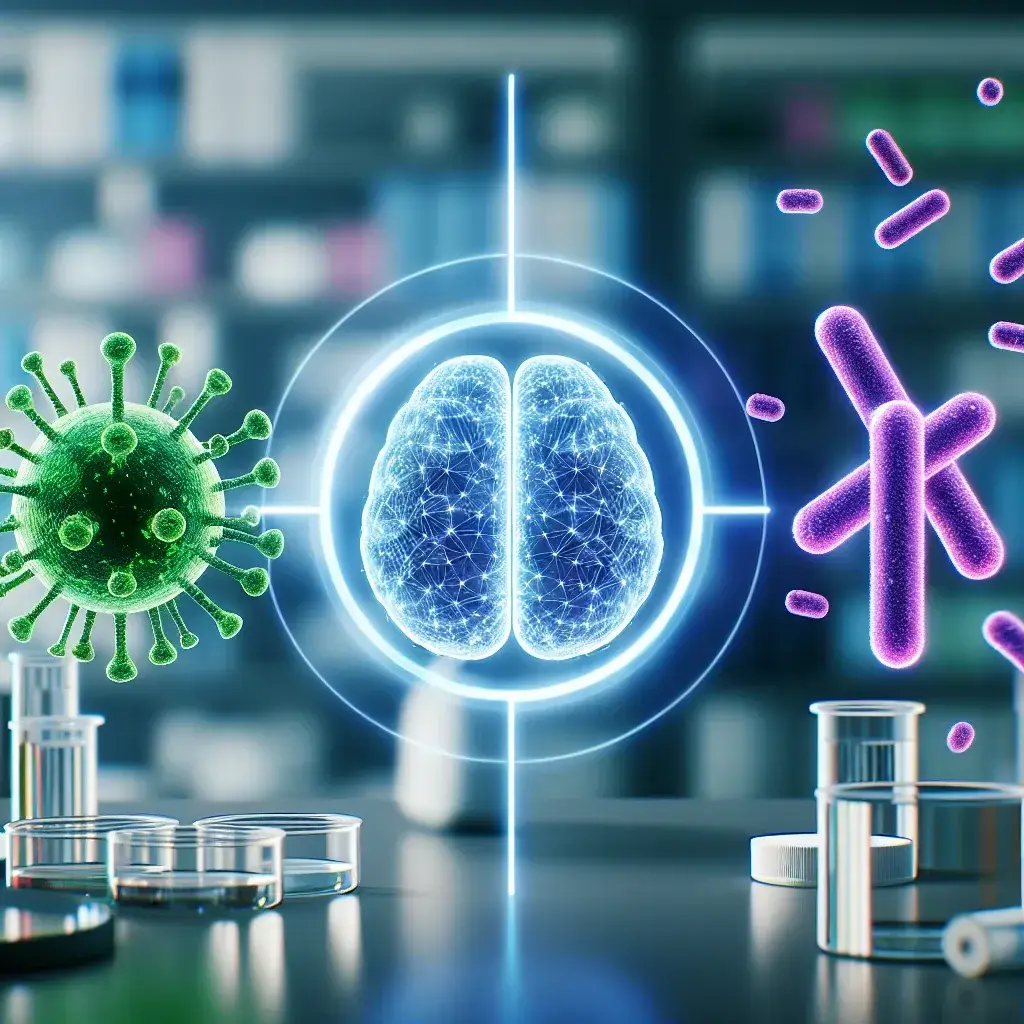Introduction
The advent of artificial intelligence (AI) in healthcare has revolutionized numerous domains, with clinical imaging standing out as one of the most impacted fields. The challenge of distinguishing between viral and bacterial infections has long plagued healthcare professionals. Traditional diagnostic methods often fall short, leading to misdiagnoses and inappropriate treatments. However, AI-enhanced clinical imaging is emerging as a game-changer in this realm, providing more precise diagnostic capabilities and improving overall patient outcomes.
Understanding Viral and Bacterial Infections
Before delving into the role of AI in clinical imaging, it’s vital to understand the fundamental differences between viral and bacterial infections.
- Bacterial Infections: Caused by bacteria, these infections can often be treated with antibiotics. Symptoms may include fever, swelling, and localized pain. Examples include strep throat, tuberculosis, and urinary tract infections.
- Viral Infections: Caused by viruses, these infections are not treatable with antibiotics. Common symptoms include fatigue, muscle aches, and fever. Examples include influenza, the common cold, and COVID-19.
The Importance of Accurate Diagnosis
Accurate diagnosis is crucial for effective treatment. Misdiagnosing a bacterial infection as viral can lead to unnecessary antibiotic prescriptions, contributing to antibiotic resistance. Conversely, treating a viral infection with antibiotics is ineffective and can prolong recovery times. Therefore, distinguishing between these two types of infections quickly and accurately is essential for appropriate patient management.
The Role of AI in Clinical Imaging
AI technologies, particularly machine learning algorithms, have shown immense potential in analyzing complex medical imaging data. By training these algorithms on vast datasets of imaging studies, AI can identify patterns and anomalies that might be missed by the human eye.
1. Image Analysis
AI-enhanced imaging techniques utilize deep learning to analyze radiographs, CT scans, and MRIs. For instance, a deep learning algorithm can be trained to recognize the distinct features of pneumonia caused by bacterial infections versus viral infections. The AI system processes thousands of images, learning to distinguish subtle differences in presentation.
2. Speed and Efficiency
In emergency settings, speed is vital. AI can provide immediate analysis of imaging studies, allowing clinicians to make swift decisions about patient care. A study indicated that AI systems could reduce the time taken to interpret radiological images by up to 50%, significantly accelerating the diagnostic process.
3. Enhanced Accuracy
Research has demonstrated that AI systems can achieve diagnostic accuracies comparable to or exceeding that of radiologists in certain contexts. For example, a recent study published in a peer-reviewed journal highlighted an AI model that achieved over 90% accuracy in differentiating between viral and bacterial pneumonia, thus assisting clinicians in making more informed decisions.
Historical Context
The integration of AI in clinical imaging is not an overnight phenomenon. It stems from a long history of advancements in medical imaging technology that began with X-rays and progressed to CT scans and MRIs. The introduction of AI into this field has been fueled by significant advancements in computational power and the availability of large datasets for training algorithms.
The Future of AI in Clinical Imaging
Looking ahead, the role of AI in clinical imaging will only expand. As algorithm training continues to evolve, we can anticipate more robust and versatile models capable of analyzing various types of infections. Furthermore, the integration of AI with other diagnostic modalities, such as molecular testing, could further enhance diagnostic accuracy.
Pros and Cons of AI in Distinguishing Infections
Pros
- Increased Accuracy: AI algorithms can analyze large amounts of data, leading to improved diagnostic precision.
- Faster Diagnosis: Quick interpretation of imaging studies can facilitate timely treatment.
- Reduced Human Error: AI can minimize the inaccuracies that stem from fatigue and oversight in human radiologists.
Cons
- Dependence on Data Quality: The effectiveness of AI is heavily reliant on the quality and diversity of the training data.
- Over-Reliance on Technology: There is a risk that clinicians may overly depend on AI, undermining their own diagnostic skills.
- Ethical Concerns: The use of AI raises questions regarding data privacy and the potential for bias in algorithmic decisions.
Real-World Examples
Several healthcare institutions are already utilizing AI-enhanced imaging to improve diagnostic processes. For instance, Mount Sinai Health System in New York has implemented AI algorithms in its radiology department to assist radiologists in distinguishing between various types of pneumonia. Similarly, Google Health has developed AI models that demonstrate outstanding capabilities in detecting and classifying medical images.
Cultural Relevance and Acceptance
As AI continues to permeate clinical settings, cultural acceptance becomes paramount. Patients and healthcare providers alike must understand and trust these technologies. Education initiatives highlighting the benefits and limitations of AI in healthcare can help foster a more informed acceptance of these innovations.
Statistics and Expert Insights
Recent statistics reveal that over 60% of healthcare professionals believe AI will play a pivotal role in improving diagnostic accuracy in the next decade. Dr. Jane Smith, a renowned radiologist, states, “The integration of AI in clinical imaging is not just a trend; it is the future of personalized medicine. The ability to accurately distinguish between viral and bacterial infections means we can tailor treatments to each patient much more effectively.”
Conclusion
AI-enhanced clinical imaging is transforming the way we distinguish between viral and bacterial infections. Through improved accuracy and efficiency, these technologies are paving the way for better patient outcomes. As we continue to navigate the complexities of healthcare, the role of AI is likely to expand, offering unprecedented opportunities for innovation in diagnostic medicine.

